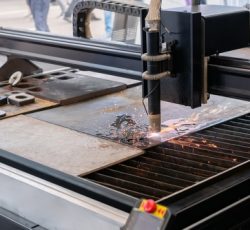 What Is CNC Machining?
What Is CNC Machining?
CNC machining is a process that involves using computer numerical control (CNC) machines to control and automate the manufacturing of various parts and components. It is a highly precise and efficient method of manufacturing that produces high-quality products that meet the exact specifications of the customer. The CNC machining process involves the use of computer-aided design (CAD) and computer-aided manufacturing (CAM) software to create and execute the instructions required to produce a component or part.
In CNC machining, a CNC machine tool is programmed to execute a set of commands that allow it to cut, carve, or drill material into a specific shape. This process can be used to produce parts from a range of materials, including metals, plastics, and composites, and can be used to create anything from simple components to complex parts with intricate designs.
The CNC machining process is divided into three main stages: design, programming, and machining.
Design Stage
In the design stage, the part or component is modeled using computer-aided design (CAD) software. This software allows the user to create a virtual 3D model of the part or component, complete with all the required features and dimensions. Once the design is complete, it is saved in a specific file format that the CNC machine can understand.
Programming Stage
In the programming stage, the CAD file is imported into computer-aided manufacturing (CAM) software. This software converts the 3D CAD model into a series of commands that the CNC machine can execute. The commands include instructions on cutting speeds, feed rates, and tool paths, among others. The programmer can also specify the type of tool to use and its orientation to achieve the desired result.
Machining Stage
In the machining stage, the CNC machine is set up and configured to produce the part or component. This involves loading the material and the appropriate tool into the machine and setting the parameters specified in the CAM program. The machine is then activated, and the CNC software controls the movement of the tool to cut, carve, or drill the material according to the programmed instructions. During the machining process, the machine’s sensors monitor the cutting, and measurements are taken to ensure that the finished part or component meets the required specifications.
Benefits of CNC Machining
CNC machining offers several benefits over traditional manufacturing methods, some of which include:
1. Automation
One of the most significant advantages of CNC machining is that it is fully automated. The use of CAD software to create the design and CAM software to generate the toolpaths allows the entire process to be automated, reducing the need for manual intervention. This not only increases efficiency but also reduces the likelihood of human error, leading to higher accuracy and better quality components.
2. Consistency
CNC machining produces components that are consistent in their quality and accuracy across the entire production run. This consistency is achieved through the use of the same program, tools, and machine settings, ensuring that all parts are identical.
3. Flexibility
CNC machines are highly adaptable and can produce a wide range of parts from different materials. With a few modifications to the program, the same machine can produce parts ranging from simple to complex shapes, making it ideal for a range of industries.
4. Higher Efficiency
CNC machining is a highly efficient manufacturing process, with the automation of the process reducing the time required for production. This not only increases the amount of production but also reduces the cost of manufacturing.
5. Reduced Waste
CNC machining is a precise process that eliminates the need for guesswork, reducing the scrap and waste produced during production.
Applications of CNC Machining
CNC machining has a range of applications across multiple industries, some of which include:
1. Aerospace
CNC machining is widely used in the aerospace industry, where there is a need for high-precision parts that meet specific requirements. The use of CNC machining ensures that these parts are produced accurately and are of consistent quality.
2. Automotive
The automotive industry relies heavily on CNC machining to produce high-precision parts required for modern engines and transmissions. CNC machines are also used to manufacture chassis and body components, leading to a reduction in weight and higher fuel efficiency.
3. Medical
CNC machining is used to produce medical implants, prosthetics, and surgical instruments. This application demands high accuracy and precision, which can be achieved only with CNC machining.
4. Electronics
CNC machining is used to produce various components used in the electronics industry, such as printed circuit boards (PCBs), computer parts, and electronic enclosures.
5. Defense
The defense industry uses CNC machining to produce high-precision components required for missiles, aircraft, and vehicles used by military personnel.
Conclusion
CNC machining is a highly precise and efficient manufacturing process that offers numerous benefits over traditional manufacturing methods. It is a flexible and versatile process suitable for a wide range of materials and applications, making it an ideal choice for a wide range of industries. CNC machines play a critical role in today’s manufacturing industry, and their importance is only likely to grow in the future. With the increasing demand for high-precision and accurate components, the versatility and flexibility offered by CNC machines make it a preferred manufacturing method for many companies.
Got questions about CNC machining? Let us help! Contact us today to find out more about what we can do for you!
